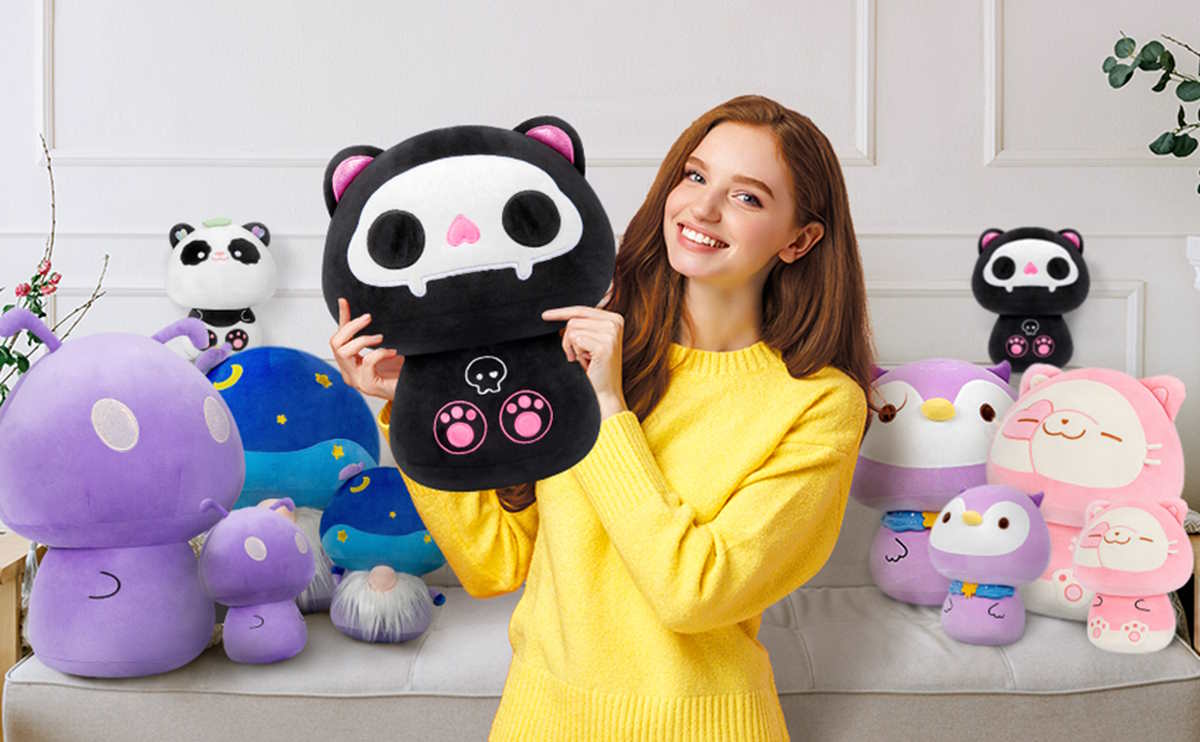In recent years, artificial intelligence (AI) has begun to play an increasingly important role in the developmenin at of stuffed animal toys. While AI has a wide range of potential applications in this domain, one of its most promising use cases is its ability to help create more engaging toys.
By understanding the preferences and interests of individual children, AI-powered stuffed animals can provide a more personalized and tailored experience that helps kids stay engaged with their toy for longer periods of time. In addition, AI can also be used to create new types of stuffed animals that are responsive and interactive, providing kids with an even more immersive and enjoyable experience.
AI is enhancing the functionality of stuffed animal toys and aligning with educational tools such as Montessori-inspired toys, which focus on developmental learning. For instance, Montessori number rods, a popular educational toy, could benefit from AI-driven technologies to better engage children by recognizing their progress, offering feedback, and adapting activities to suit their learning pace. Integrating AI in both plush toys and educational tools can help bridge the gap between fun and learning, making playtime more productive and tailored to each child’s developmental needs.

As the technology continues to evolve, it is likely that we will see even more innovative and exciting ways in which AI can help shape the future of stuffed animal toys. For now, however, it is clear that AI is already having a positive impact on this sector and is making these popular toys even better for everyone involved.
How Can AI Be Used in Stuffed Animal Toys
Artificial intelligence, commonly known as AI, is the study of how computers can be programmed to “think” and make decisions. It can detect patterns in data and use that information to predict outcomes or automate tasks. It can also help machines learn from their experiences. When it comes to cute stuffed animals like those offered by Cuteeeshop, AI can help create more interactive and engaging toys.
For instance, AI could enable stuffed animals to recognize different faces and even respond to voice commands. Additionally, it could help bring cute stuffed animals to life with motion sensors that trigger sound effects when squeezed or moved. With its help, artificial intelligence is helping us unlock a world of possibilities in technology-infused stuffed animal toys that give children exciting new ways to play.
How Can AI Help Create More Engaging Toys for Children
Through the wonders of Artificial Intelligence, the potential for creating more engaging children’s toys is exciting. AI can be used to provide enhanced interactivity between stuffed animal toys and children. By utilizing AI-driven technologies in toy design, these intelligent toys can use voice recognition and other sensing capabilities to interact with children in a variety of ways.
For example, artificial intelligence can empower these intelligent toys to recognize children’s facial expressions, follow commands, and recognize topics used in conversations. With this level of interaction available from these stuffed animal toys, it is possible for them to create a truly immersive learning experience for children which will be both fun and educational at the same time.
What Are Some of the Benefits of Using AI in Stuffed Animal Toys
AI is revolutionizing the stuffed animal toy industry by introducing new ways to interact with these classic, beloved toys. With AI woven into the design of stuffed animals, modernized versions can be created that can help support cognitive development, nurture emotional intelligence, and even increase problem-solving skills during playtime.
AI can also provide children with more stimulating experiences as they engage with their toys in a way that was never before possible, as plushies that rely on AI are able to respond and react to input from kids while also teaching principles of empathy and collaboration.
As a result, these high-tech stuffed animals offer numerous educational opportunities for kids while still providing all the comforts and fun of traditional plushies.
Conclusion
AI technology has the potential to revolutionize stuffed animal toys and create more engaging experiences for children. While there are still many unknowns when it comes to utilizing AI tools in such products, early research and initiatives have illustrated that AI can help make toys both smarter and able to be tailored to individual preferences.
Through increased customization, enhanced interactivity, and improved safety protocols, the use of AI technologies represents a promising opportunity for the stuffed animal toy industry. AI will undoubtedly continue to disrupt all markets, including the world of educational toys.
Understanding how this tech can shape children’s development should be a fundamental goal for parents, educators, and toy manufacturers as they seek to utilize artificial intelligence in crafting the most engaging and interactive kid’s play experience possible.